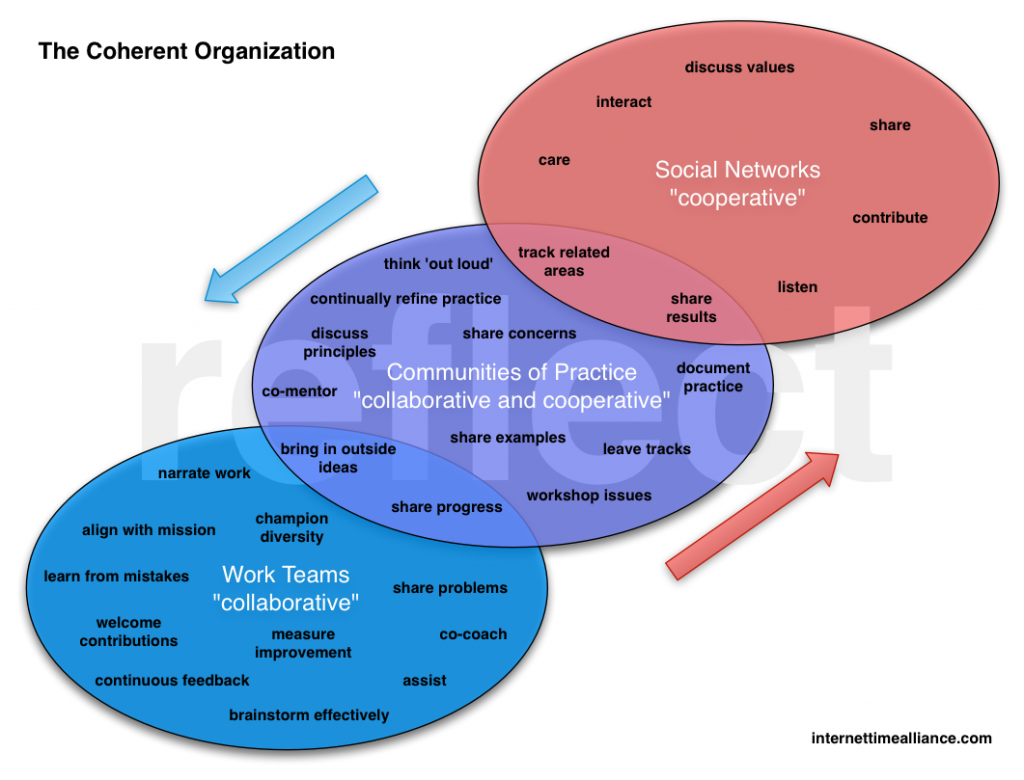One of the things to do with models is use them as the basis to explain and predict. And right now I’m working with the Coherent Organization model (which emerged from the work of the ITA) and looking at the implications for decisions. How does this model map to choices you make in the organization?
 There are three layers: work teams composed of members from different communities of practice, that are connected outward to broader social networks. An important element is the flow of information within the model; ensuring that there are no barriers to making effective choices.
There are three layers: work teams composed of members from different communities of practice, that are connected outward to broader social networks. An important element is the flow of information within the model; ensuring that there are no barriers to making effective choices.
At the work team level, you want people to be able to communicate with one another effectively, and collaborate to find answers. While this can occur face to face, you don’t want geography or chronology to be a barrier. So you want good tools that can represent and support shared understandings. You might also want ways for the team members to find out more about each other, via profiles. The members of the teams should be bringing in their understandings from their communities, but also be free to ask questions of their community in case their understandings aren’t sufficient. And of course they should share their learnings back with the community.
This latter naturally implies good communication and collaboration tools as well, but here the community is not only within the organization, but outside as well. There certainly will be internal sites for the community with proprietary information and tools, but there also needs to be participation in the broader discussion. Just as you (should) go to conferences to share with colleagues not in your workplace, so too should you be participating in online communities. The learning should be ongoing. This also implies that there needs to be an effective way to go beyond the intranet. You get security concerns here, but you need to find a balance, or you’re cutting off half of the organizational brain! Team members should be asking questions of the internal and external communities (as appropriate, and policies about what’s allowed to be discussed, even if it’s just “don’t be an idiot”are fair enough), and answering them in turn.
And, of course, the community should be observing related communities of practice inside and out, and sharing their own learnings. For example for learning design there’s a need to track developments in fields like software engineering (e.g. ‘agile methods’), design in general and specific design like game, graphic, interface, etc, sociology, anthropology, psychology, neuroscience, and more.
Decisions, then, are about how to facilitate the most optimal flow of information without compromising organizational integrity. Realize, of course, that except in extreme cases, these folks will have mobile devices, so in some sense you can’t really block their queries, but you really don’t want to anyway. Yes, you lock up the data you have to protect, by law or responsibility, but other than that you try to support communication that can advance the organization. It’s about policies and technologies (and of course culture, but that’s another story).
As always, so what am I forgetting?
#itashare
Leave a Reply